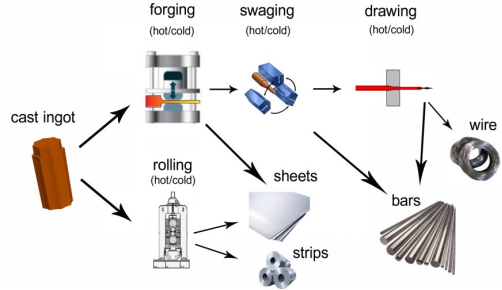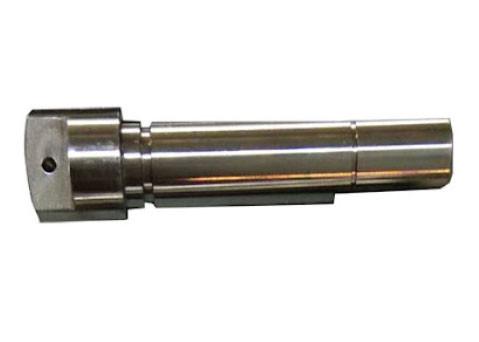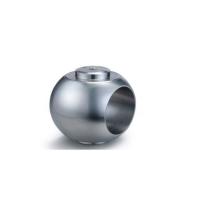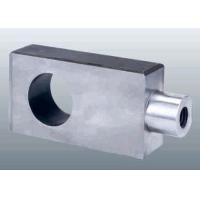| Sign In | Join Free | My himfr.com |
|
| Sign In | Join Free | My himfr.com |
|
| Ask Lasest Price | |
| Brand Name : | DINGSCO |
| Model Number : | According to customers requirements |
| Certification : | ISO 9001:2015,PED 2014/68/EU,API 6A,API-20B,TSG,NORSOK |
| Price : | Negotiable |
| Payment Terms : | T/T |
| Supply Ability : | Negotiable |
| Delivery Time : | (Sample Order) 7 days |
Nickel Alloy Valve Stem Inconel 625 Reactor Core Components Nuclear Industry
Nickle Alloy Valve Stem is not only a moving part and a load-bearing component during the valve opening and closing process, but also a sealing element. It is subjected to the impact and corrosion of the medium, as well as friction with the packing. Therefore, when selecting the valve stem material, it is necessary to ensure that it has sufficient strength, good impact toughness, anti-scoring properties, and corrosion resistance at the specified temperature. The valve stem is a wearing part, and attention should also be paid to the material’s machinability and heat treatment properties when selecting it.
The Valve Stem Process:
Materials:
Generally selected materials include 2Cr13, 3Cr13, 1Cr17Ni2, and 1Cr18Ni12Mo2Ti. 2Cr13 and 3Cr13 stainless steels are suitable for water, steam, and weakly corrosive media with nominal pressure not exceeding 32MPa and temperature not exceeding 450 degrees. They can be strengthened through methods such as chromium plating and high-frequency quenching. 1Cr17Ni2 stainless steel valves can withstand corrosive media. 1Cr18Ni9Ti and 1Cr18Ni12Mo2Ti stainless acid-resistant steels are used in high-temperature valves with nominal pressure not exceeding 6.4MPa and temperature not exceeding 600 degrees, and they can also be used in stainless steel valves with temperatures not exceeding -100 degrees, especially in low-temperature valves. 1Cr18Ni9Ti can resist nitric acid and other corrosive media; 1Cr18Ni12Mo2Ti can resist acetic acid and other corrosive media. When used in high-temperature valves, 1Cr18Ni9Ti and 1Cr18Ni12Mo2Ti can be treated with nitriding to improve abrasion resistance.
Nickel Alloy 625 (UNS NO6625) is a material withexcellent resistance to pitting, crevice, and corrosioncracking. This alloy is highly resistant in a wide range oforganic and mineral acids, and it exhibits good hightemperature strength. Excellent mechanical properties at both extremely lowand extremely high temperatures. Outstanding resistance to pitting, crevice corrosion, and intercrysta ine corrosion. Almost complete freedom from chloride induced stress corrosion cracking. High resistance to oxidation at elevated temperaturesup to 1050°C. Good resistance to acids, such as nitric, phosphoricsulfuric, and hydrochloric, as wel as to alkalis makespossible the construction of thin structura parts ofhigh heat transfer.
Applications
Fabrication Data:
Alloy 625 can be easily welded and processed by standard shop fabrication practices, however because the high strength of the alloy, it resists deformation at hotworking temperatures.
Chemical Composition:
| Element | Ni | Cr | Fe | Mo | Nb+Ta | C | Mn | Si | P | S | Ai | Ti | Co |
| Minimum(%) | 58 | 20 | - | 8 | 3.15 | - | - | - | - | - | - | - | - |
| Max(%) | - | 23 | 5 | 10 | 4.15 | 0. | 0.5 | 0.5 | 0.015 | 0.015 | 0.4 | 0.4 | 1 |
Physical Properties:
| Temperature | Electrical Resistivity | ||
| °C | °F | Micro-ohm-meter | Micro-ohm-inches |
| 23 | 74 | 1.26 | 49.6 |
| 100 | 212 | 1.27 | 50 |
| 200 | 392 | 1.28 | 50.4 |
| 300 | 572 | 1.29 | 50.8 |
| 400 | 752 | 1.30 | 51.2 |
| 500 | 932 | 1.31 | 51.6 |
| 600 | 1112 | 1.32 | 52 |
Thermal Properties:
| Temperature | Thermal conductivity W/M-°C | Thermal conductivity Btu-in./ft².-hr.-°F | |
| °C | °F | ||
| 23 | 74 | 9.8 | 68 |
| 100 | 212 | 11.4 | 79 |
| 200 | 392 | 13.4 | 93 |
| 300 | 572 | 15.5 | 108 |
| 400 | 752 | 17.6 | 122 |
| 500 | 932 | 19.6 | 136 |
| 600 | 1112 | 21.3 | 148 |
Processing Flow Chart:



|




